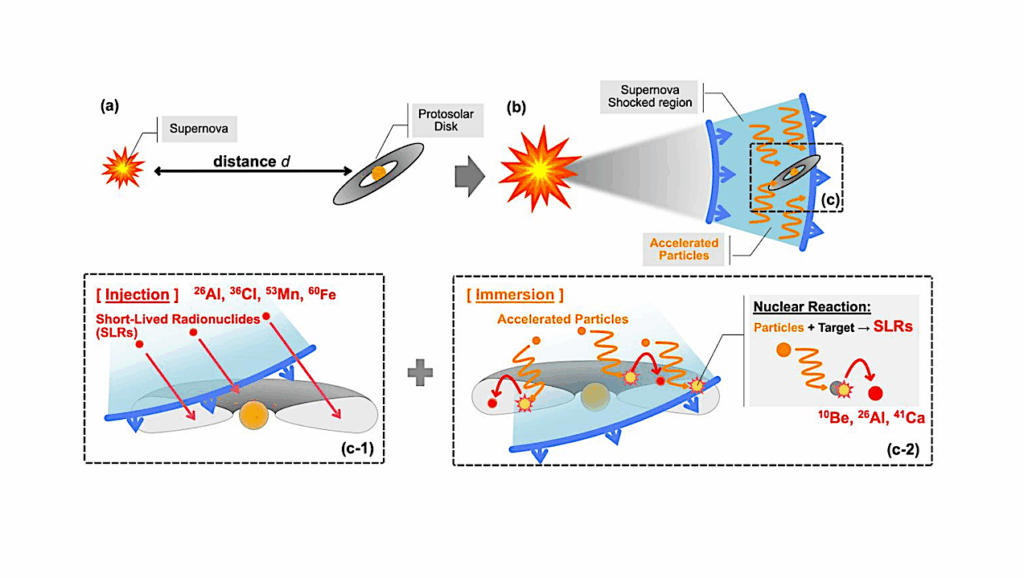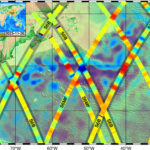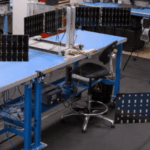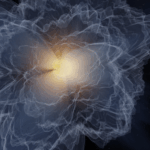Now Reading: Exocomets of Beta Pictoris I: Exocomet destruction, sodium and disk line variability in 17 years of HARPS observations
-
01
Exocomets of Beta Pictoris I: Exocomet destruction, sodium and disk line variability in 17 years of HARPS observations
Exocomets of Beta Pictoris I: Exocomet destruction, sodium and disk line variability in 17 years of HARPS observations
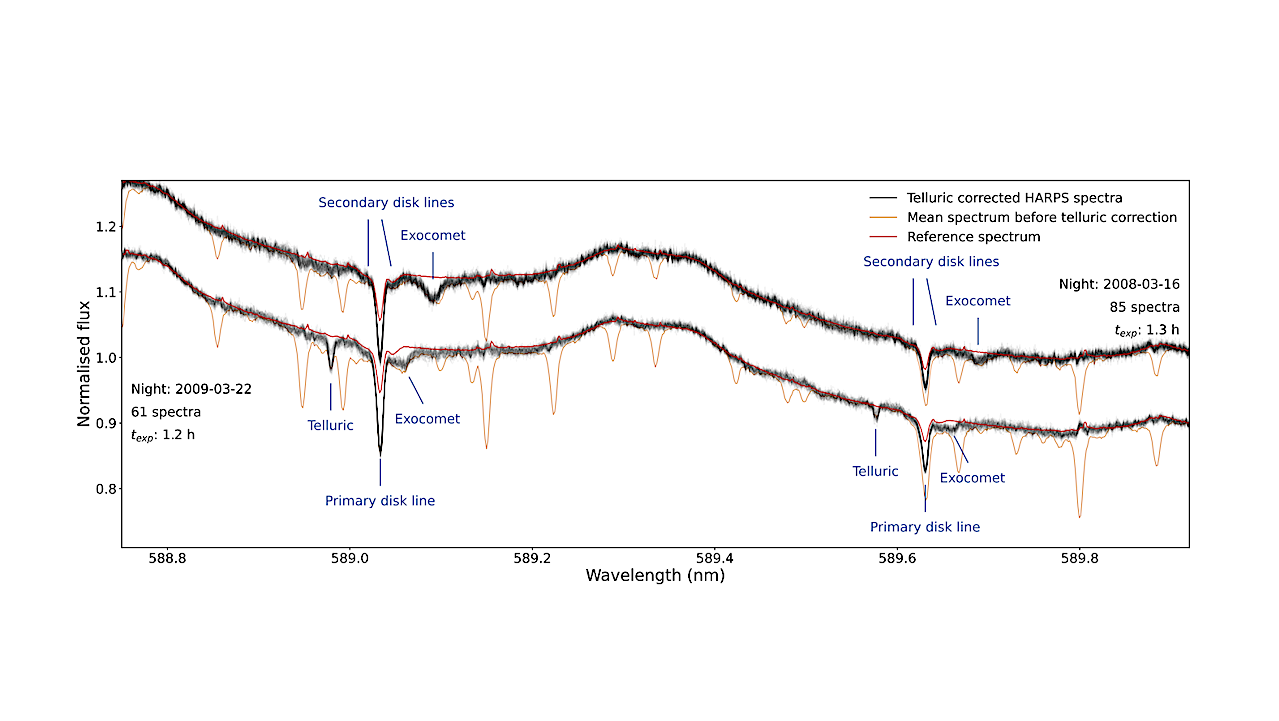

Telluric-corrected HARPS observations at the sodium doublet, obtained on two nights nearly one year apart, vertically offset for clarity. In both nights, significant disk line absorption is visible, as well as red-shifted lines attributed to a form of exocomet activity. Labels in black indicate the nights of observation, the number of spectra taken and the total exposure time. The night-average spectrum prior to telluric correction is over-plotted in orange, demonstrating the relative positions of the telluric water lines. — astro-ph.EP
The young β Pictoris system has been monitored with high-resolution optical spectrographs for decades. These observations have revealed strongly variable absorption in the Ca II H&K lines attributed to in-falling cometary bodies.
Since 2003, over 9000 HARPS observations of β Pictoris have been taken and many of these have not yet been used for exocomet studies. We search these spectra for new exocomet phenomenology enabled by the long time coverage and large volume of this dataset. We systematically carry out telluric correction of the HARPS spectra using molecfit, compare multi-year observations of the Ca II and Na I lines and use a Bayesian fitting algorithm to extract exocomet line parameters.
We explore the usage of an unbiased reference spectrum with which to calibrate the continuum, and investigate Keplerian orbital solutions to observed exocomet acceleration. We find a general absence of exocometary sodium line absorption, with only two instances of clear (∼2 % deep) exocometary sodium out of 198 nights of observation, as well as a weaker (∼1 %) feature that persists over 13 nights in 2004.
We find that these events occur during times of deep Ca II absorption at the same red-shift, implying that strongly Ca II-evaporating exocomets also exhibit detectable levels of Na I, in spite of the vast majority of Na I being rapidly photo-ionised in close proximity to the star. We find long-lived Ca II absorption in 2017 and 2018 that persists on a timescale of a year, which may be difficult to explain with the classical exocomet model.
Finally, we investigate two strongly accelerating, blue-shifted exocomes observed in 2019 that show strong and sudden departures from Keplerian motion, suggesting rapid changes to the dynamics of the exocomet cloud. We hypothesize that this is caused by the destruction of the comet nuclei shortly after their periastron passages.
H.J. Hoeijmakers, K.P. Jaworska, B. Prinoth
Comments: 14 pages, 17 figures, accepted for publication in A&A
Subjects: Earth and Planetary Astrophysics (astro-ph.EP)
Cite as: arXiv:2505.21625 [astro-ph.EP] (or arXiv:2505.21625v1 [astro-ph.EP] for this version)
https://doi.org/10.48550/arXiv.2505.21625
Focus to learn more
Submission history
From: Jens Hoeijmakers
[v1] Tue, 27 May 2025 18:00:35 UTC (12,366 KB)
https://arxiv.org/abs/2505.21625
Astrobiology,
Stay Informed With the Latest & Most Important News
-
 012024 in Review: Highlights from NASA in Silicon Valley
012024 in Review: Highlights from NASA in Silicon Valley -
 02Panasonic Leica Summilux DG 15mm f/1.7 ASPH review
02Panasonic Leica Summilux DG 15mm f/1.7 ASPH review -
 03From Polymerization-Enabled Folding and Assembly to Chemical Evolution: Key Processes for Emergence of Functional Polymers in the Origin of Life
03From Polymerization-Enabled Folding and Assembly to Chemical Evolution: Key Processes for Emergence of Functional Polymers in the Origin of Life -
 04How New NASA, India Earth Satellite NISAR Will See Earth
04How New NASA, India Earth Satellite NISAR Will See Earth -
 05And Thus Begins A New Year For Life On Earth
05And Thus Begins A New Year For Life On Earth -
 06Astronomy Activation Ambassadors: A New Era
06Astronomy Activation Ambassadors: A New Era -
07SpaceX launch surge helps set new global launch record in 2024














